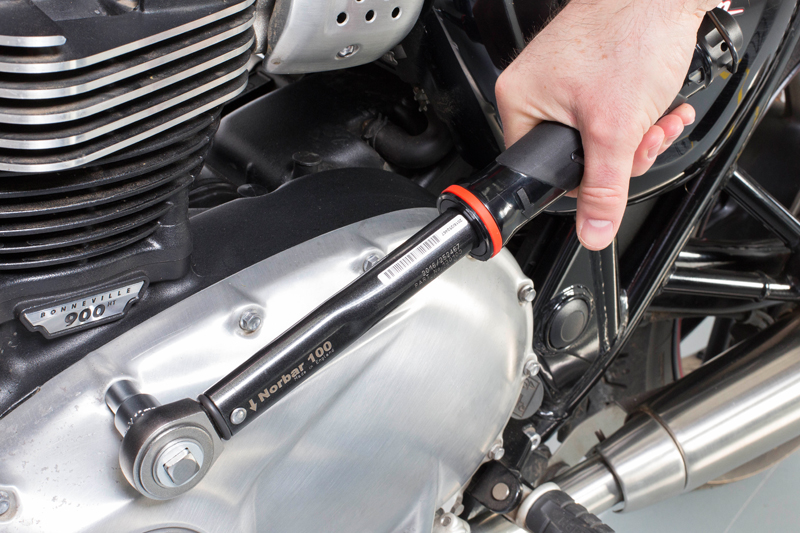Norbar looks at three common uses of torque wrenches on motorcycles and what you need to look out for.
When scouring the internet, many motorcycle maintenance queries begin with “Do I need a torque wrench to do [insert task] on my bike.” More often than not, if you intend to service it safely at home, the answer to this is yes. Here, Andy Ball, Design Engineer at Norbar Torque Tools, experienced motorcycle enthusiast and seasoned competitor, explores three common uses of torque wrenches during motorcycle maintenance and considers what you need to look out for in order to sustain good working practice.
Torque wrenches are a necessity for any critical bolting applications. Typically their use is associated with areas such as crankshaft pinions or cylinder head bolts on the motorbike. However, there are plenty of basic maintenance tasks that also benefit from the accuracy and repeatability of a torque wrench. This is because motorcycles are put through physically demanding conditions and those doing DIY maintenance need to be able to rely on their tools as much as the parts on the bike itself.
Axle nuts: chain tensioning and wheel removal
Whether you are adjusting the chain tension, or removing a wheel, it is advised to always use a torque wrench when tightening the axle nut. Using a regular wrench and guessing by hand when doing either of these tasks can result in overtightening, which can irreversibly damage or strip the threads. However, a torque wrench at the correct setting will prevent this risk, tightening the axle nut accurately and ensuring the components are properly assembled.
Be aware that each bike model is different and there is no fixed rule when it comes to axle nut torque values. To set the correct value on your torque wrench, you must always refer to the manufacturer’s manual.
Top Tip: Chain tension often alters slightly as you tighten the axle nut, recheck the chain tension after torqueing the axle nut and be prepared to readjust if necessary.
Oil Changes
Specific manufacturer recommendations may differ, however as a rule of thumb, you should change your oil once a year, or every 3,000 to 5,000 miles.
Some would say that a standard socket set and elbow grease will suffice here. However, changing the oil with a regular wrench means you are at risk of overtightening again. Not only can this cause damage to the sump plugs, the resulting thread repair could lead to you needing to remove and strip the engine. The cost of doing this far outweighs the price of a torque wrench, so if you are going to change your oil it’s a no brainer to purchase a torque wrench. Expect somewhere in the 10-30 Nm range – but again, always check the specific manufacturer’s torque requirements.
Top Tip: Change the sealing ring on the sump plug to avoid oil leaks and don’t forget to replace the filter at regular intervals.
Changing brake pads
When it comes to changing the brake pads, torque wrenches are an essential item in your tool kit – not only to get the job done properly, but also to provide peace of mind. For this you will usually need a torque wrench in the range of 10-50Nm for the caliper bolts.
Top Tip: Don’t leave the calipers hanging on brake lines. Instead, hang the calipers using cable ties, and stick a note on the dash as a reminder to tighten/check the brake caliper bolts before riding. Remember to pump the brake lever to get a solid feel before riding the bike.
Almost every job on a motorcycle is a safety critical operation so if in doubt, always seek the assistance of a professional mechanic. Only experienced owners should attempt to carry out their own work, and for those regularly doing so, a torque wrench is a must. While it may be tempting to complete basic maintenance tasks with cheaper equipment, and to believe that you only need a torque wrench if you’re taking on technical jobs such as engine rebuilding, doing so may mean you are not adequately protected when out riding. Manufacturers provide torque specifications for a reason – it pays to follow them.










